Summer 2014 Law Library Reading List
California Dreamin’ by the Mamas and the Papas, Surfin’ Bird by the Trashmen, Surf Rider by the Ventures, Good Vibrations by the Beach Boys, Wipeout by the Surfaris, Going to California by Led Zeppelin, Running on Empty by Jackson Browne, California Uber Alles by the Dead Kennedys, Californication by the Red Hot Chili Peppers, California Gurls by Katy Perry.
It’s summer, put one of these tunes on your turntable (yes they’re back), pour whatever you like over ice, and chillaxe with one of these summer reads.
- 60 Hikes Within 60 Miles: San Francisco (including North Bay, East Bay, Peninsula and South Bay) by Jane Huber
- Atlas of Remote Islands: Fifty Islands I will Never set Foot on by Judith Schalansky
- Americanah by Chimamanda Ngozi Adichie
- The Book Thief by Markus Zusak (Audiobook)
- The Bosnia List: A Memoir of War, Exile, and Return by Kenan Trebincevic
- Care of Wooden Floors by Will Wiles
- Department of Speculationby Jenny Offill
- How To Do Things with Words by J.L. Austin
- The Goldfinch by Donna Tartt
- I Thought It Was Just Me (But It Isn’t) by Brené Brown
- Little Cub by Oliver Dunrea (Ages 3-7)
- Mimus by Lilli Thal, translated by John Brownjohn
- Ninety Percent of Everything by Rose George
- The Rosie Project by Graeme Simsion
- Rules of Civility by Amor Towles
- Sardine in Outer Space by Emmanuel Guibert and Joan Sfar (Grades 1-5)
- Shotgun Lovesongs by Nicholas Butler
- Sports Illustrated for Kids Full Count, The Top 10 Lists of Everything in Baseball (Ages 5-12)
- Summertime Rainbow by Belle Yang (Toddler Board Book)
- The Tyrant’s Daughter by by J.C. Carleson (YA)
- We Are All Completely Beside Ourselves by Karen Joy Fowler
- The Wisdom of the Last Farmer: Harvesting Legacies from the Land by David "Mas" Masumoto
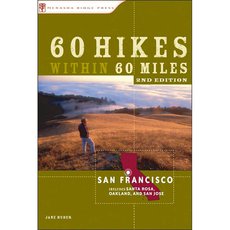

60 Hikes Within 60 Miles: San Francisco (including North Bay, East Bay, Peninsula and South Bay)
by Jane Huber
Atlas of Remote Islands: Fifty Islands I will Never set Foot on
by Judith Schalansky
Chris TarrHead of Cataloging
It's summer, and the weather is fine. You don't want to read a book! You want to get outside! Here's a book that will help you do that. Jane Huber just published the third edition of her excellent 60 Hikes within 60 Miles: San Francisco: including North Bay, East Bay, Peninsula and South Bay. I've been using the first edition for years as a way to find places to walk, and there are glorious places to walk around here. The hikes are all nearby, and divided into geographical sections. She gives you the level of difficulty, length, change of elevation (plus a little schematic of the elevation change -- I for one am not a fan of going down and then back up again -- I'd much prefer to do the reverse), options to make the hike easier or harder, highlights, best time of year to visit, directions. It's such a handy guide -- a great way to make it easy to plan a weekend hike in a place you never would have thought of. Personal favorites of mine have been Black Diamond Mines in Antioch and Morgan Territory in Livermore. There's a website, too -- http://www.bahiker.com -- but you should get the book.
If you're more interested in armchair travel, have you seen the Atlas of Remote Islands : Fifty Islands I will Never Set Foot on, by Judith Schalansky? These are again divided geographically. with a small description and a map of each of the islands. Use the larger maps on the endpapers to see where in the world each island is. A somewhat gloomy book, it does not encourage you to set foot on any of these islands, either, but it does remind you that the world is a pretty big place, containing places very far from anything at all.

Americanah
by Chimamanda Ngozi Adichie
Annelise MissbachCataloging
This is a love story, a book about the immigrant experience, as well as an observation about American society. The main character, a young Nigerian woman, leaves a Nigeria ruled by a military dictatorship and comes to the United States to continue her university education. She finds herself staying on for many years and we learn about her successes and failures. We also follow a young Nigerian man who travels to the UK to better his life. Not only are they experiencing homesickness and culture shock, but also a profound alienation and loneliness in Western society. As the young woman metamorphoses from Nigerian to Non-American Black, she expresses and shares her experiences and observations in a blog that had not been an issue for her in Nigeria: race and how to be black in American society. We are privy to life before emigration and after their return to a recently democratic Nigeria. Thought provoking, wise and insightful, this novel is inspiring and beautifully written.
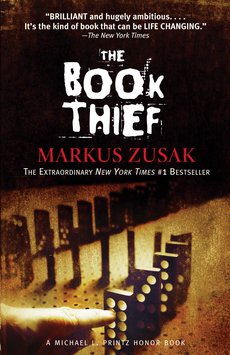
The Book Thief
by Markus Zusak (Audiobook)
Marlene HarmonReference Librarian
Listening Library, an imprint of the Random House Audio Publishing Group
Narrated by Allan Corduner
Listening Length: 13 Hours, 56 Minutes
This popular Young Adult novel, inspired by the experiences of the author’s parents in World War II Germany, became a bestseller and has been made into a movie. After listening to the audiobook, I’m sure neither print nor film could improve on the experience of hearing it read by Allan Corduner. Corduner embodies the narrator of this novel, who happens to be Death himself. As you can imagine life, or rather the end of it, is keeping Death very busy as the war progresses. Try as he might to maintain his dispassionate view of humanity he slips a little when he considers Liesel Meminger. Parents disappeared, brother dead, 10 years old and illiterate, Liesel is sent to live with foster parents Hans Hubermann, a poor house painting accordion player and Rosa, his trash talking wife. It is in their rough edged, but not unloving care that Liesel finally learns to read, she also learns to steal books, a skill she hones after stealing a book from a lighted pyre at a Nazi book burning. She falls in love with what she finds in books. Considering that this book is not only set in a poor area of 1940s Germany, it is also narrated by Death, you might think it would be grim and depressing, and it certainly has its moments. But it is also a story about the unique fun of childhood friendships, the love and courage of family, the humor of everyday life, all of which somehow survive death and war. Allan Corduner narrates Death, wearily cynical and practical, pulled despite himself into Liesel’s corner, with complete conviction. He transports the listener into the full and compelling lives of World War II Germany’s working poor.

The Bosnia List: A Memoir of War, Exile, and Return
by Kenan Trebincevic
Michael LevyAssociate Director, Law Library; Lecturer in Residence
For the last 3 years I've been playing on an indoor soccer team with a number of Bosniaks (Bosnian Muslims) who fled Bosnia during or after the war of 1992-95. Outside of our weekly games I know little about their lives and backgrounds, except for their passion for soccer. I recently came across a published memoir by Kenan Trebincevic, who escaped Bosnia with his parents and brother when he was twelve years old. Trebincevic's family eventually settled in Astoria, Queens where there is a substantial Bosnian community.
This gripping memoir weaves the story of his family life from the outbreak of the conflict in 1992, their eventual escape to the United States via Austria, with a return trip to Bosnia in 2011. The "list" in the title of the book refers to the people and places that Trevincevic wishes to confront and visit on his return. These include his beloved karate teacher who became a murderous soldier, his childhood Bosnian Serb friends who turned viciously against him, his next door neighbor who systematically stole items from their family apartment, to a pair of psychopathic criminals who in the guise of the war stole and looted from as many Bosniaks as they could.
However, the return to Bosnia with his father and brother morphs from revenge and vendetta to a story of redemption and understanding. Trevincevic cannot forgive those who committed atrocities, acts of violence (both physical and mental) and the day to day humiliations his family experienced but he comes to terms with the trauma of the war years and is better able to continue on his own path of healing.

Care of Wooden Floors
by Will Wiles
Kathryn FerrierHR Manager
To begin, this is a novel, not a DIY guide, so my question was: what? how could this be a story with a title like that? Of course, being one who can't resist lifting the rock to see the underside, I really had to find out. Turns out this is a darkly humorous, off beat tale, in a sort of stranger-in-a-strange-land kind of way, which is how house-sitting can be sometimes. So our unnamed main character arrives in an unnamed Eastern European city to house-sit for his former college roommate Oskar, who has an elegant, pristine flat and two cats. Simple premise. But there's a catch: Oskar is a perfectionist obsessed with executing his life and career according to unwavering discipline and strict order. Our house-sitter? He's a rather klutzy, easy going, lack of attention to detail type, who ends up wherever he does, well meaning, but often missing the mark. Needless to say, our house-sitter's good intentions backfire despite Oskar's numerous neat-freak notes that pop up unexpectedly in corners and odd places, as if he anticipates where our house-sitter will be poking around - notes that are often judgmental or forbidding (note on piano: "Do Not Play"). The episodes go from ridiculously funny to horribly wrong and back again; you never know what's next with this one, an adventure/nightmare pretty much. Anyway, who among us has not had an experience (or two) where we goofed something up, and then tried to fix it, which actually made it worse, far worse than the initial goof up? This is a witty narrative of good intentions gone more than awry, and even has a bit of a twist at the end.
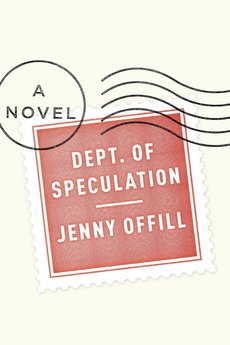
Department of Speculation
by Jenny Offill
Leslie Berring
Like the Rosie Project, this book has another unreliable narrator, quirky, unbalanced and so interesting, The Wife (no one gets an actual name in this book) who really wants to be an Art Monster and has deep literary ambitions, marries and has a child. It's very real, very charged, and completely consuming. It's lyrical in praise of marriage and parenthood, and then heartbreaking about betrayal and breakdown. It's funny and painful and illuminating. It's writing that doesn't spell out everything - you let it wash over you, and you understand.
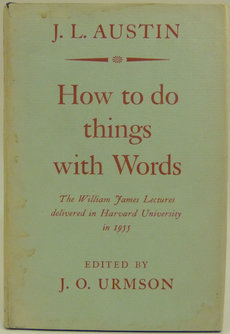
How To Do Things with Words
by J.L. Austin
Dean C. RowanDirector, Reference & Research Services
Austin's posthumously published lecture notes are, in both good and bad respects, quintessential scholarly musings about language, specifically aimed at "a theory of speech-acts." Put simply, speech acts include utterances that appear to accomplish in the saying what is being said, "I promise..." being a typical example. Austin's untidy, repetitive, yet frequently clever prose imparts a charm to the collection. Its unfinished quality surely accounts in part for the enduring attention it has received from scholars of language and philosophers, John Searle and Stanley Cavell among many others. Austin can be insightful at one instant, coy or hedging at another. Typically, he settles for relativism and deference to context, as in "It is important to take the speech-situation as a whole," when characterizing and classifying things done with words (but not just words).
I suppose the book's reputation set me up for disappointment, but I found the whole enterprise frustrating. For example, in the interest of brevity and efficiency Austin brackets questions that loom over his argument. The effect can be jarring, as when he famously declares that he will not take account of poetry or words spoken on the stage. Granted, nobody expects a promise uttered on the stage to break the fourth wall. But Austin views these utterances as merely "hollow" "etiolations" of "normal" occasions. These deployments of language are "parasitcal" upon normal uses. For Austin normal, ordinary language as uttered almost automatically (i.e., without too much philosophical reflection) in day-to-day conversation is the focus.
That is, until it isn't. Ironically, a book devoted to ordinary language is dappled with weird jargon and vague figures of speech. Certain varieties of "speech acts" (an irritatingly redundant term) include "performatives" and "perlocutions," "verdictives," "behabitives," and "exercitives." An utterance succeeds as an "illocution" only if it is "felicitous," just as a statement succeeds if it is true (and yet "one cannot always answer in a simple manner whether it is true or false"). "Stating" is "on a level with arguing, betting, and warning" (my emphasis). In this latter example, the question couldn't be more loudly begged, because Austin is there asking whether making a statement can be said to be an act in the same way as arguing or betting. He does not define what he means by "level." (At another point he equates two "parallel" senses. Are parallel lines the same line?) The effect of this irony is both amusing: it's fun to imagine "exercitive" functioning as lucidly as an ordinary word like "cat" or "France" -- and instructive: Austin's recourse to specialized terminology to make a linguistic or philosophical point suggests there could be drawbacks to relying as he does on the demotic for models of clarity or precision. To be sure, Austin frankly admits to a level of skepticism at various steps of his project. I just wonder whether the insight is worth the effort. I give the book a B- (and in so doing, I have performed a verdictive). I will try to read his Sense and Sensibilia with greater satisfaction (a commisive).

The Goldfinch
by Donna Tartt
Edna LewisReference Librarian
The best book written by human hands …Pulitzer Prize… 10 best of 2013...ridiculously long …too depressing…badly needs editing. Regardless of your opinion, everyone is talking about The Goldfinch. Tartt is a cult favorite (remember The Secret History), and since she only comes out with a book about every 10 years or so, fans are seizing on this one.
The story in brief. The protagonist’s mother is killed by a terrorist’s bomb during a visit to the Met. The young teen boy survives and during the bomb’s immediate aftermath is persuaded by a dying antiques dealer to steal a painting of the Goldfinch (a Dutch masterwork from the Vermeer period). The book then follows the boy’s journey to adulthood - first with the wealthy Upper East Side family who takes him in after the tragedy, then with the boy’s loser father and his drug dealing girlfriend in a desolate Las Vegas suburb, then back again to NYC where he moves in with the antique dealer’s partner and niece (for whom he feels a profound connection from the bombing). Later he himself becomes an antique dealer but also wrestles with addiction and his own shady practices as well as his feelings about the stolen painting. Tartt is a master at creating a sense of place and character. The sly and worldly Russian kid Boris who becomes his closest pal in Vegas (with significant repercussions later in the book) is one of the most engaging characters I’ve come across in a long time. I spent a lot of time thinking about who should play him in the movie.
IMHO the book is way too long and I found myself at times skipping every other paragraph. There were many scenes I loved reading but wondered whether they were necessary. Nonetheless the characters and the story have stayed with me.
I’d start reading it right now if I were you – you know your book group is going to pick it and you might as well get a head start. Recommended for the e-reader, easier to carry.
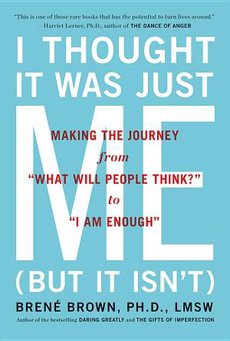
I Thought It Was Just Me (But It Isn’t)
by Brené Brown
Ramona MartinezBoalt Express
I have been doing a lot of introspection lately and reading my share of books you would find in the “self help” section. I became aware of Brené Brown recently when I came across a TEDx talk she did on the subjects of shame, fear, vulnerability and how we react to those things. See it here. In her book I Thought It Was Just Me (But It Isn’t) Brown tells the story of her research. She interviewed hundreds of people, collected lots of data and then analyzed it to find patterns. She provides clear definitions of shame vs. guilt – most definitely not the same thing. She also presents her theory of shame resilience and provides real-life examples of how people practice it. This book is very much geared toward women and goes into great detail about the kinds of societal expectations and media messages that influence how women see themselves. I found myself closely relating to the stories and I had lots of little “aha moments.” My copy of the book is dog-eared so I can refer back to particularly relevant passages. So what if you are a man? Should you read this book? Maybe not. But this is not to say that the subject does not relate to men. Brown says she is confident that men experience shame and use strategies to build shame resilience in much the same way as women. What differs are the “social-community expectations that drive shame and the messages that reinforce those expectations.” I am hoping Brown, or perhaps a male colleague, will follow up on this research and apply it to men. We might end up understanding each other better and developing a stronger sense of empathy.
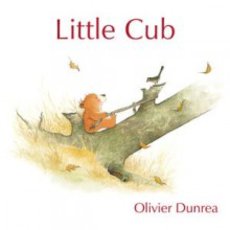
Little Cub
by Oliver Dunrea (Ages 3-7)
Leah Klein(with Keri Klein) 1st Grade, Fairmont Elementary
The name of my book is Little Cub by Olivier Dunrea. It is about Little Cub who lived alone in the forest. He felt sad. It is also about Old Bear who lived alone in the forest. Old Bear is lonely. Little Cub is hungry. He does not know how to catch fish or get honey. He can’t sleep because it is dark and there is no one to take care of him. He is scared. Old Bear can catch fish and get honey. He has a big cabin. But he does not like to be alone. It makes him feel grumpy. Old Bear finds Little Cub trying to sleep. They meet each other. Old Bear names Little Cub because he didn’t have one. Old Bear holds Little Cub and takes him home to bed. He will teach Little Cub to fish and get honey. Old Bear tells Little Cub a story and Little Cub can fall asleep. They feel happy. I like the story because it has a happy ending.
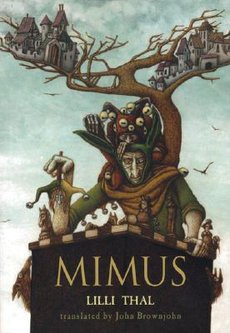
Mimus
by Lilli Thal, translated by John Brownjohn
Joe CeraLegal Research Librarian for Information Technology & Scholarly Communications
Here is an opportunity to brush up on your issue recognition skills for future law school exams. This is a story of trespass, assault, battery, kidnapping, slander, murder, animal cruelty, and jesters. Mimus is set in medieval times where two fictional kingdoms have been at war for years. The crown prince is tricked into being captured by the rival king. Instead of being sent to a dungeon and killed, ending the story in just over 30 pages, he is forced into servitude as the jester's jester-in-training. He can't escape because the rival king is holding the prince's father in the dungeon. Once his spirit is broken, his only choice is to play along until he can find a solution to his problem. Like any good protagonist, the prince has skills. He picks up his assigned jester skills quickly and learns to take the abuse of being a jester mostly in stride. The story is focused primarily on the relationship between Mimus, the jester, and little Mimus, the prince. Just like real life, the relationship between the jesters is complicated. There are a lot of external forces that affect their relationship and the reader only sees the relationship through the young prince's eyes. Good fiction tells a captivating story with rich descriptions of relationships. Mimus is no different but I think the best part is that you never really understand Mimus's motivations leaving you conflicted in the end. I've read this book a couple times which is something I don't normally do. I would give this book a rating of 17 squids.
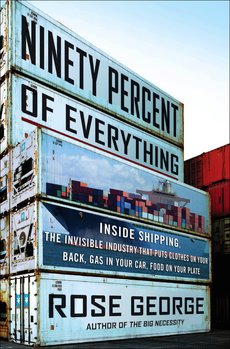
Ninety Percent of Everything
by Rose George
Ellen GilmoreReference Librarian
The title of this eye-opening investigation into the modern shipping industry refers to the fact that ninety percent of what we wear, eat, and consume arrives via container ships. Most of us, however, know almost nothing about this enormous industry, suffering from what the chief of the British navy calls “sea blindness”. The sea is something we fly over or use for leisure activity. Heavy security prevents us from physically exploring the world of shipping, so Rose George decides to investigate and report back. Her passionate book is especially illuminating for those of us who live near a major port yet know nothing of its business. Since the advent of container shipping in the 1960’s, trade by sea has grown fourfold. In 2011, the 360 commercial ports of the U.S. took in international goods worth $1.73 trillion, or eighty times the value of all U.S. trade in 1970. The newly designed ships expected to sail in 2014 will carry eighteen thousand (!) containers. To do her research, the author embedded herself on a giant Maersk container ship for five weeks, and for another week on a Portuguese navy frigate patrolling for pirates in the Gulf of Aden. She exposes what the daily life and working conditions are like on the ships, and admonishes us to “buy your fair-trade coffee beans by all means, but don’t assume fair-trade principles govern the conditions of the men who fetch it for you. You would be mistaken.” She dispels any romantic notions you might have about pirates, and vividly describes the ecological impact of these enormous vessels crisscrossing our oceans every day. This book reads like a novel, a modern adventure on the seas, but Rose George’s explorations will make you see this real world with a new appreciation for almost everything you own. It might be the perfect beach read.
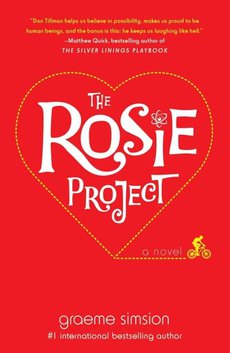
The Rosie Project
by Graeme Simsion
Leslie Berring
Simsion’s debut novel is a lovely take on the unreliable narrator - he's "somewhere on the spectrum" of autism, and while he's quite the catch as a handsome geneticist, his current project, The Wife Project, is clearly doomed as he hasn't a clue. Luckily, the mysterious Rosie happens upon him, and while she meets none of his predetermined requirements, she is going to be the right woman for him, no doubt about it.
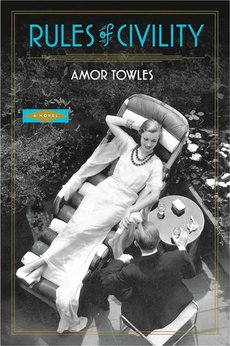
Rules of Civility
by Amor Towles
Leslie Berring
It begins with ones of the best framing devices, a series of photographs taken secretly on the New York subway around 1937 by Walker Evans (now available at the Metropolitan Museum). The narrator, Katey Kontent, relates her history from coming to New York in 1937 to the present day, and there are echoes of F. Scott Fitzgerald wit and Frank Capra screwball comedy, but the essence is the ineffable beauty of New York and its march with time. You only wish you'd known these people.
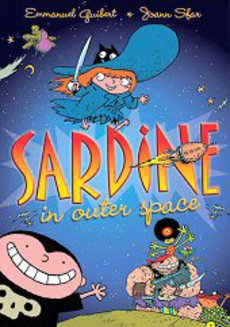
Sardine in Outer Space
by Emmanuel Guibert and Joan Sfar (Grades 1-5)
Jacob Klein4th Grade, Fairmont Elementary
This is a review of a graphic novel series called Sardine in Outer Space. The series is by the French author and illustrator Emmanuel Guibert and Joan Sfar. The setting is in outer space. The characters have spaceships to go to different planets. Doc Krok and Supermuscleman are the bad guys. Captain Yellow Shoulder, Little Louie, and Sardine are good guys.
Each book in the series has about 12 mini stories. My favorite story so far is called The New Look. It is my favorite because Doc Krok and Supermuscleman change into new costumes. Captain Yellow Shoulder, Little Louie, and Sardine came too. They changed into new outfits and then notice Supermuscleman and Doc Krok. They hide behind a curtain in the changing room and then Sardine looks over the curtain.
Supermuscleman and Doc Krok ask Sardine, Little Louie, and Captain to give them some fashion advice. Then Sardine says that he could look better if they cut off his mustache, put on a wig, wear a tie, rip open his shirt, and show your butt. I recommend this series. The illustrations are great because they have cool colors and the pictures are funny. The stories are hilarious and creative.

Shotgun Lovesongs
by Nicholas Butler
Edna LewisReference Librarian
Butler’s first novel describes the lives of 4 friends who grew up in the farming community of Little Wing, Wisconsin – a representative for every dying small town in America. Now in their 30s, one member is a world famous rock musician, one a busted up rodeo rider and recovering alcoholic, one a successful Chicago businessman determined to return home and rescue Little Wing’s dying economy, and one a married farmer who stayed while the others left. The story is told in the alternating voices of these childhood pals (as well as the farmer’s wife Beth). The book explores how coming from a certain place echoes throughout one’s life and just how much we can ever really leave “home.” Butler beautifully evokes the prairie’s emptiness, the brutal winters, the honkytonk bars, the backbreaking effort to make a farm pay, and the combination of isolation and community that defines a rural American town in the 21st century.
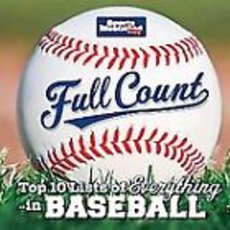
Sports Illustrated for Kids Full Count, The Top 10 Lists of Everything in Baseball
(Grades K-6)
Isaac Klein4th Grade, Fairmont Elementary
I am reviewing Sports Illustrated For Kids Full Count, The Top 10 Lists of Everything In Baseball. It’s very informative. It has 36 lists and 95 pages. All the lists are great. My 5 favorites are “Nicknames,” “Minor League Team Names,” “Mascots,” Yogi-isms,” and “Scandals.” There are many more good ones. Some of them are just plain cool like “Innovations” and “Facial Hair.” There is even “People More Likely to Make the Hall of Fame Than Jim Thome.” It says the names of the people or things then it gives little descriptions of the people or things. The photographs are big and colorful.
I’ll recommend this book for ages 5-12. And in a star rating up to 10, I would give it an 8.7.

Summertime Rainbow
by Belle Yang (Toddler Board Book)
I-Wei WangReference Librarian
Did you ever want your toddler to learn a language that you don’t know at all?1 Summertime Rainbow, by Belle Yang, could be one step in the right direction.2 bilingual boardbook introduces some basic colors, flower names, and other Chinese vocabulary with cute illustrations featuring a family of rabbits wandering through a sunny meadow. The text is shown in Chinese on the left-hand pages and in English on the right, with a pronunciation guide at the back showing the inflections and phonemes (sort of)3 for the Chinese characters.
As with much young children’s literature, the plot is fairly aimless, but one of the flowers does hide a surprise. So the experience of reading this story will not be entirely devoid of interest for the grown-up reader. And who knows, maybe you’ll pick up a few useful Chinese-language phrases.4
My parents—who gave us the book—are native speakers of Chinese, as well as fluent in English, and they tell me the translation is good: both technically correct and age- appropriate. But who knows; it’s quite possible that the Chinese text contains a secret message to our toddler that if she moves out of our house and goes to live with her grandparents permanently, she will learn Mandarin and get a trip to the zoo every day and eat cookies any time she wants.
To be honest, unless you know spoken and written Chinese, you will probably have to just memorize the Chinese text if you want to follow along in that language, because there is no toddler in the world who will put up with your flipping back and forth to the back to see how the words are pronounced. I have experimented extensively with our 18-month old—she is usually fairly patient with my maternal incompetence, but brooks no nonsense when it comes to page turning. I had to make a cheat sheet.
1I’m not talking about just your standard toddler English, like “muk-muk” (milk), “patty-dum” (pachyderm), or “nah-surry” (rhinoceros … duh). I’m talking about a whole other language.
2Unless you speak Chinese, of course. Then it’s a step in the wrong direction, but you could enjoy it anyways.
3Diacritics are shown for the inflections (level, rising, dipping, and descending), but the pronunciation key doesn’t explain how the tones sound; plus, you have to be familiar with pinyin spelling, which, for example, represents the “sh” sound with an x. The website MDBG.net provides an English/Mandarin dictionary with [somewhat canned-sounding] audio pronunciations for most words.
4For example, you’ll know just want to say the next time you are in the company of a Chinese speaker and see a red peony: Ā!—hóng mŭ dān.

The Tyrant’s Daughter
by J.C. Carleson (YA)
Fiona LewisSophomore, The Bentley School
Fifteen year old Laila lives in an unnamed Middle Eastern country where her father is king and a dictator although she just knows him as her father. When her father is killed in a coup, Laila, her younger brother and mother flee to Washington, D.C. There Laila goes from being a pampered princess to a nobody. She is confused as she tries to reconcile what she knew of her father with the brutal, ruthless tyrant she reads about in the news. Meanwhile the politics of the Middle East are simmering around her as her mother tries to regain power. I liked the interesting perspective of this story and liked Laila’s character, particularly as she tries to figure out the truth and her place in her family.
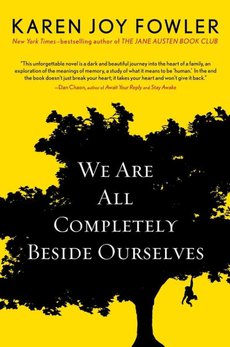
We Are All Completely Beside Ourselves
by Karen Joy Fowler
Leslie Berring
Fowler wrote The Jane Austen Book Club, which I liked quite well. But this is an order above that. This is a family drama about loss and betrayal and connection. If you can manage to read this book without any spoilers, it will maintain its visceral punch. That aside, it is beautiful and desperate and heartbreaking. If a book can touch you so deeply that you mourn and rejoice for the fate of its characters, that is one damn good book.
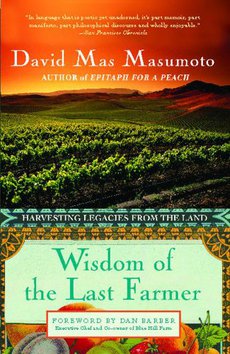
The Wisdom of the Last Farmer: Harvesting Legacies from the Land
by David "Mas" Masumoto
Kathryn Ferrier HR Manager
Stories can be farmed just as well as organic peaches according to David "Mas" Masumoto, and he does both with passion and sensitivity. Clearly, I don't wish to live on a farm, too much time doing hard work that I would rather spend getting my nails done; however, I'm fascinated by these stories, intrigued by the commitment and the calling of organic farmers and their significant efforts to strengthen the farm-to-table connection. Masumoto's description of what it's like to bite into the most ripe and flavorful peach imaginable makes me want to run out to Berkeley Bowl immediately, elbow my way through the crowds, and stock up on Sun Crests. He shares thoughts on the dedication (or stubbornness) that it takes to persevere in spite of the many challenges that face growers in the California Central Valley: impossible Johnson grass, hard pan, unpredictable weather patterns and uncooperative farm equipment, yet always those golden moments that make him grateful to be an integral part of the tie between what's good and healthy for the earth and what's good and healthy for people. The stories convey a belief in the land even when it throws you for a loop, literally, and then turns around and yields such treasures that you can't believe your good fortune to be a part of it, if not in monetary gain, then certainly in a wealth measured by cycles of the seasons and the everyday miracles that link you indelibly to the earth, connecting you to the vines and the vines to you as part of the continuum. One of the legacies of the Masumoto family is the plight of 120,000 Japanese- Americans after Pearl Harbor, the forced evacuation to relocation camps in desolate parts of the country, the struggle to rebuild lives when the war ended. A generation later, after growing up on the farm and graduating from UC Berkeley, Masumoto returned to the farm to work with his dad, side by side in a quiet partnership, cultivating heirloom peaches, nectarines, and grapes using organic methods, powered by sweat equity and gumption. There are personal struggles as well; Masumoto's dad experiences a stroke while in the fields, yet has the wherewithal to drive the tractor back to the barn before climbing down and wandering around it, trying to remember how to turn it off. With his dad's frail health, Mas reflects on aging, transitions, and how change inspires new ways of doing things. He writes: "Trust in the stewardship we practice; the belief that we can make a difference, even on the small scale of the eighty-acre organic farm." This book captures other such thoughtful musings of a third-generation farmer, and the poetic descriptions of sumptuous fruit and farm equipment are wonderful.